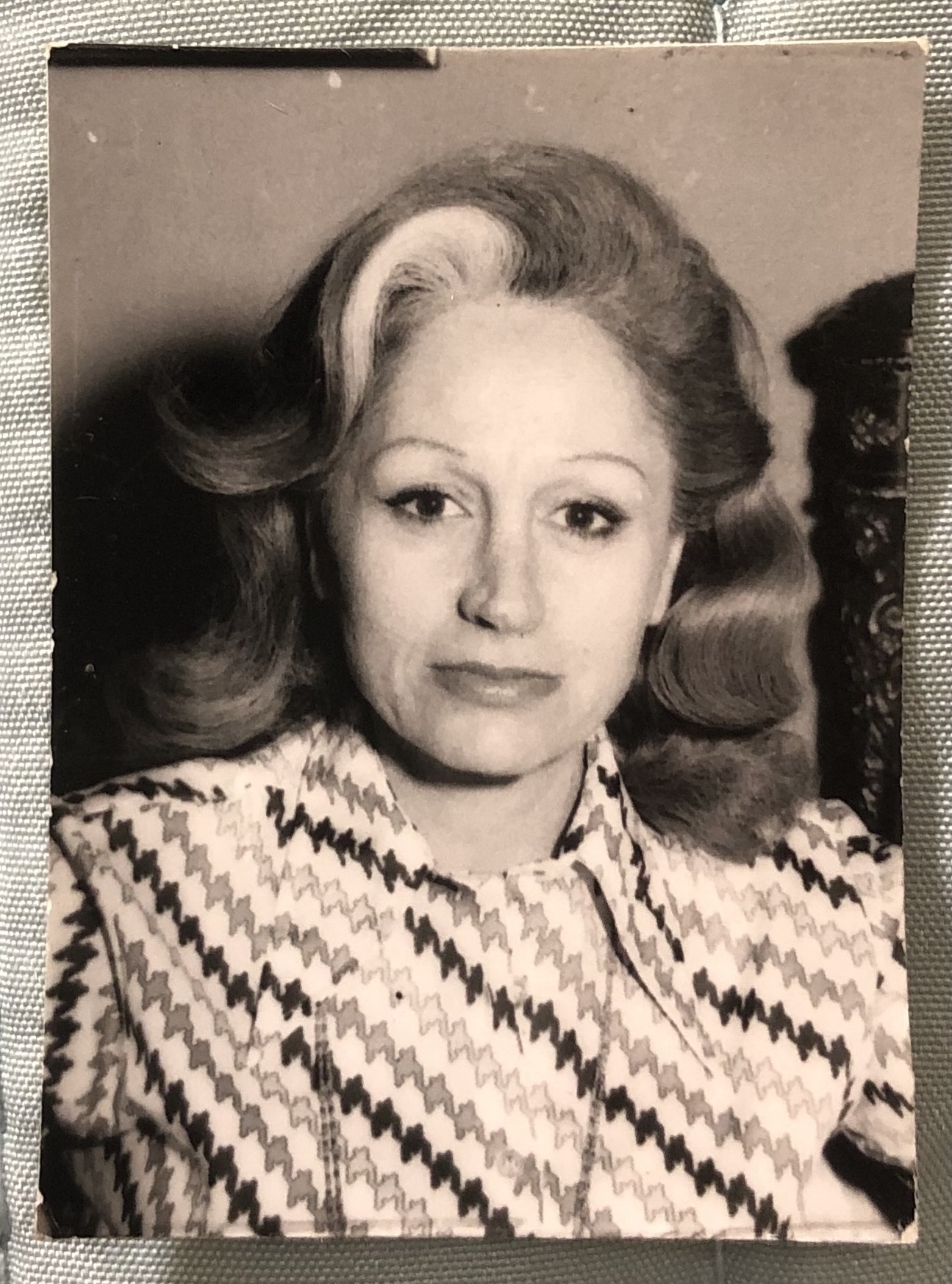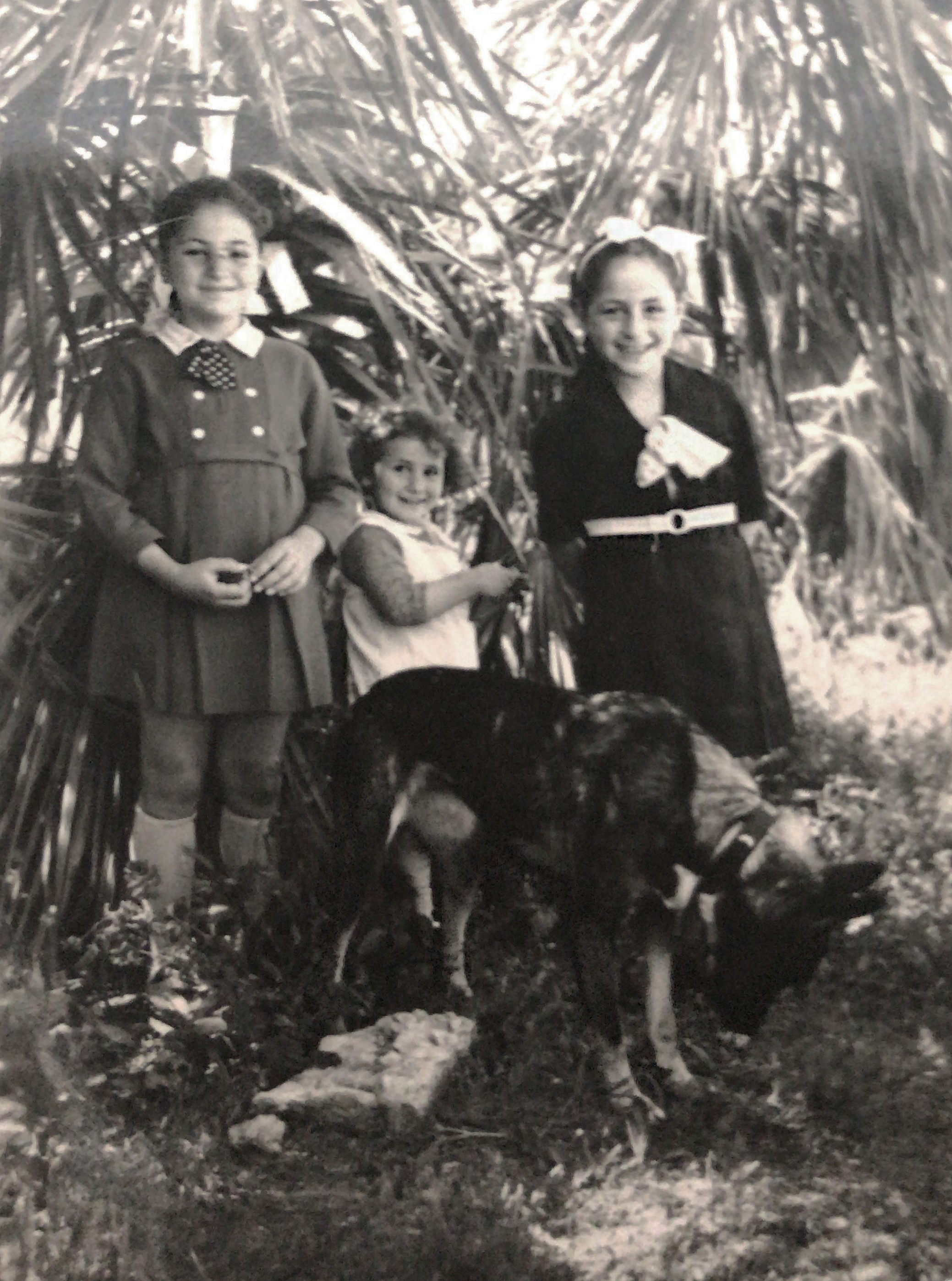


‘Taking Leila Home’
by Solenne Tadros
It was January 2018. I gathered my colored pencils and sketch paper and sat down with my 84-year-old Palestinian grandmother at her dining room table in Amman. I asked her to illustrate the memory of her bedroom in Haifa, Palestine––what it looked like in 1948, the last year she physically occupied that space. She was 13 then.
︎︎︎ Solenne as a child with her Grandmother, Leila Khoury Nimry ︎︎︎
I'll never forget her wearing her thick seeing glasses, bending forward, bringing her face so close to the paper. She wanted to be as detailed as possible. She began using different colored pencils to draw out the placement of her furniture. I sensed waves of frustration ripple through my teta as she tried her best to illustrate her memory. I'd, too, experience frustration––though a different kind––when translating her illustration into a 3D virtual reality model to take her home.
I jumped into project (X)odus thinking I could digitally revive my grandmother's memory of her childhood bedroom using virtual reality technology. The goal was to give my grandmother a piece of her childhood digitally. To my surprise, the project's development would lead to my shedding of many tears, extreme feelings of helplessness, and artist insecurity. It took me three nervous years to show my grandmother the final project.
Prior to this project, the childhood memories with my teta were of us watching Martha Stewart together or sneaking away into her bedroom to find chocolate she saved for me. She always smelled of breadsticks and tea time, and all I knew of her past was that she was Palestinian. We'd never gone into the nitty-gritty details. The idea of Palestine that I was familiar with was a culmination of stories I'd heard from the news and people around me. However, after several one-on-one interviews with her and trying to understand her own story for the first time, I found it very difficult to fathom how a woman with such an intense childhood, filled with loss, displacement, and instability, could remain so poised, collected and uplifted.
I pieced together her memories relying on her drawings and interviews. The virtual reality scene I created consists of a bedroom with no walls––borderless––placed in the center of her neighborhood in Haifa. Using a 360 screenshot from Google Maps captured in 2017, I recreated her bedroom on the same street she grew up on in Haifa. I spent hours photoshopping out modern-day objects and replacing store signs in Hebrew with Arabic. I could have added walls to her bedroom, but this virtual reality re-creation wasn’t only about taking her back to her childhood bedroom, but taking her back to her childhood bedroom in Palestine. I wanted her to recognize the location above all else. When asking her about her favorite songs growing up, she always answered, "Asmahan." Incorporating Asmahan's music was another element of nostalgia that could potentially elevate my teta's experience in this virtual reality creation. So I added my teta's favorite song by Asmahan, "Layali Al Ons" ليالي الانس." Floating above the 3D modeled furniture is a calendar dating back to 1947, with a photograph of Asmahan on top.
︎︎︎ Solenne’s 3D renderings of her grandmother’s memories of her childhood room in Haifa, Palestine ︎︎︎
All of the 3D model furniture I used to recreate my teta's memory was downloaded for free from several 3D modeling websites online. With her illustration by my side, hours and hours were spent on Google trying to find the perfect 1930s bedside table, a wooden vanity set, and the intricate white wrought iron bed frames that she explained to me in detail.
I downloaded a 3D model of a rag doll and placed it on my teta's "bed." It represents the doll she used to fall asleep with as a child, the doll she had to leave behind when she fled Palestine to seek asylum in Lebanon. Next to her bed, I placed a framed black and white photo of her 13-year-old self standing next to an olive tree in Palestine. There are two identical beds in the virtual reality scene, as she shared her bedroom with her younger sister, who now lives in Beirut.
A lot of this project required improvisation. Using furniture that somewhat resembled her memory. Trying to add as many details from my teta's memories into the scene, even if it didn't make sense at times. I was accumulating the stories from my teta's life in Palestine and compressing them into one space as best as I could. I was no virtual reality pro, but I saw this as the only immersive medium that could help make my teta feel present in Palestine.
When I interviewed my teta and she spoke about Palestine, she never mentioned Palestinian food or clothing. She spoke about family and her dog Dinky. How her mother used to order furniture from France using French catalogs. How her father used to light the Christmas tree using candle fire, and how she lost him when she was only nine years old. The church she could see outside her window and the tall eucalyptus trees.


︎︎︎ Leila Khoury Nimry in her youth in Palestine ︎︎︎
Nowadays, we try to keep Palestine alive through its rich cuisine and cross-stitched attire, wearing the keffiyeh and attending social justice protests in solidarity with the Palestinians. But when my teta was uprooted from her Palestine, she did not lose traditional Palestinian cuisine, nor did she lose traditional Palestinian clothing. She lost her foundation. She lost familiarity with where she belonged. She lost the future she envisioned having with the people she loved. She lost the soil that gave her safety and security. She lost the bonds she made with her community.
As an artist, I allowed myself to be vulnerable enough to empathize with my teta's story. But in feeling her emotions and pain, I felt like I could never do her story justice. I felt frustrated working with a new technology and helpless in knowing that no matter how much time I invested in the project, I could never truly bring my teta back to her Palestine.
It took me three years to share it with my teta in March 2021. Between 2018 and 2021, this virtual reality scene was exhibited in New York, Dubai, Abu Dhabi, and Rotterdam. I witnessed people eager to put on the VR headset and experience my teta's memory of Palestine.
Exhibition Guest: “What is this?”
Me: “I recreated my teta’s childhood bedroom in 1948 in Haifa, Palestine in VR!”
Through my teta's memory, people were time traveling and experiencing her Palestine.
At a bazaar in Abu Dhabi, I set up a booth next to another young Palestinian woman. She was intrigued to try out the VR experience and put on the headset to visit my teta's former bedroom. When she removed the headset, she cried and embraced me. Her tears were reflective of many things: her pain, her sense of yearning to return to her homeland, her sympathy.
I'd felt like I was exhibiting a digital illusion, an inaccurate depiction of my teta's memory. But it was enough to give the woman in Abu Dhabi a sense of comfort and a sense of hope that she was, in fact, back in Palestine. No travel required, no documents required. Back home.

︎︎︎ Click for a snippet of “How Would You Feel?”︎︎︎
@xodus.global is a project that supports the rebuilding of lives that have been affected by man-caused displacement. This project is inspired by Leila Khoury Nimry, who was forced to flee her home in Haifa, Palestine in 1948 due to invasion, occupation, and apartheid.
“How Would You Feel?” is a snippet from Leila's story, head to xodusglobal.com to read the full article.
@xodus.global is a project that supports the rebuilding of lives that have been affected by man-caused displacement. This project is inspired by Leila Khoury Nimry, who was forced to flee her home in Haifa, Palestine in 1948 due to invasion, occupation, and apartheid.
“How Would You Feel?” is a snippet from Leila's story, head to xodusglobal.com to read the full article.
